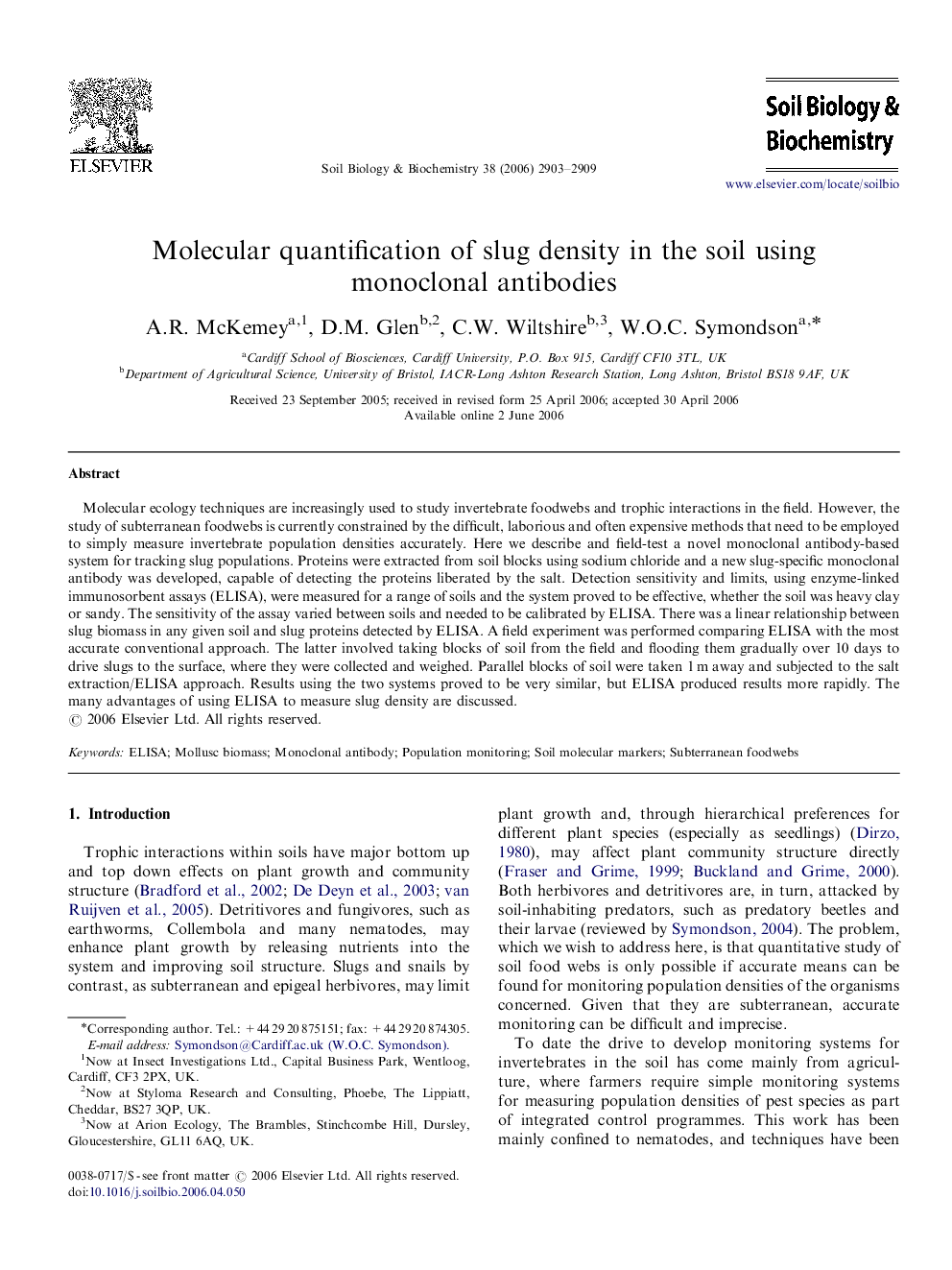| Article ID | Journal | Published Year | Pages | File Type |
|---|---|---|---|---|
| 2027143 | Soil Biology and Biochemistry | 2006 | 7 Pages |
Molecular ecology techniques are increasingly used to study invertebrate foodwebs and trophic interactions in the field. However, the study of subterranean foodwebs is currently constrained by the difficult, laborious and often expensive methods that need to be employed to simply measure invertebrate population densities accurately. Here we describe and field-test a novel monoclonal antibody-based system for tracking slug populations. Proteins were extracted from soil blocks using sodium chloride and a new slug-specific monoclonal antibody was developed, capable of detecting the proteins liberated by the salt. Detection sensitivity and limits, using enzyme-linked immunosorbent assays (ELISA), were measured for a range of soils and the system proved to be effective, whether the soil was heavy clay or sandy. The sensitivity of the assay varied between soils and needed to be calibrated by ELISA. There was a linear relationship between slug biomass in any given soil and slug proteins detected by ELISA. A field experiment was performed comparing ELISA with the most accurate conventional approach. The latter involved taking blocks of soil from the field and flooding them gradually over 10 days to drive slugs to the surface, where they were collected and weighed. Parallel blocks of soil were taken 1 m away and subjected to the salt extraction/ELISA approach. Results using the two systems proved to be very similar, but ELISA produced results more rapidly. The many advantages of using ELISA to measure slug density are discussed.
